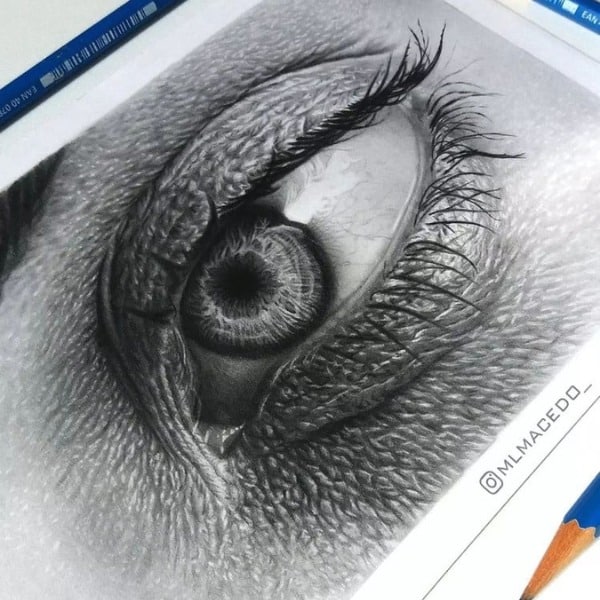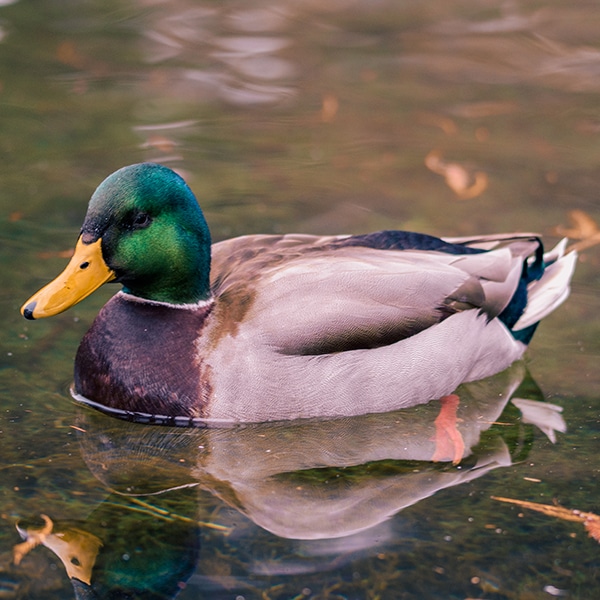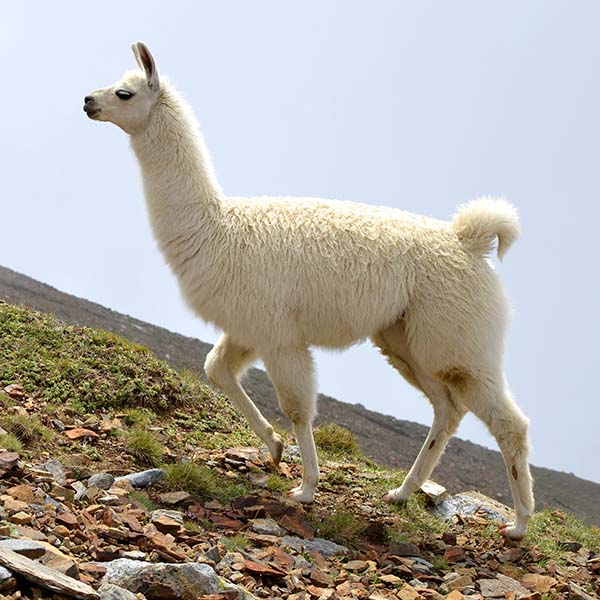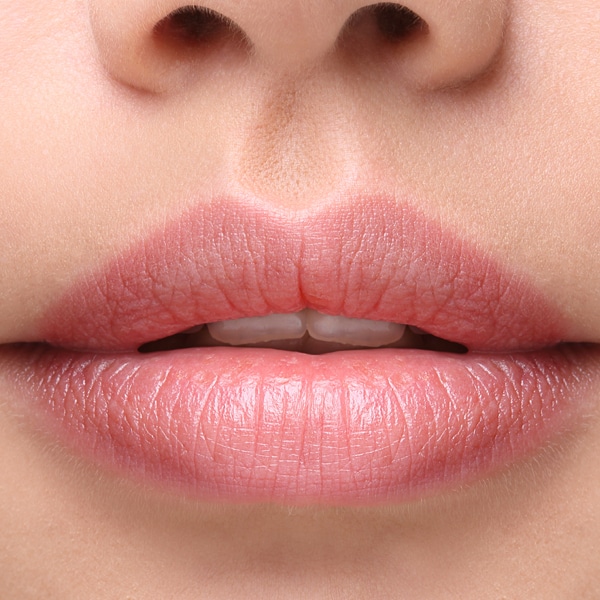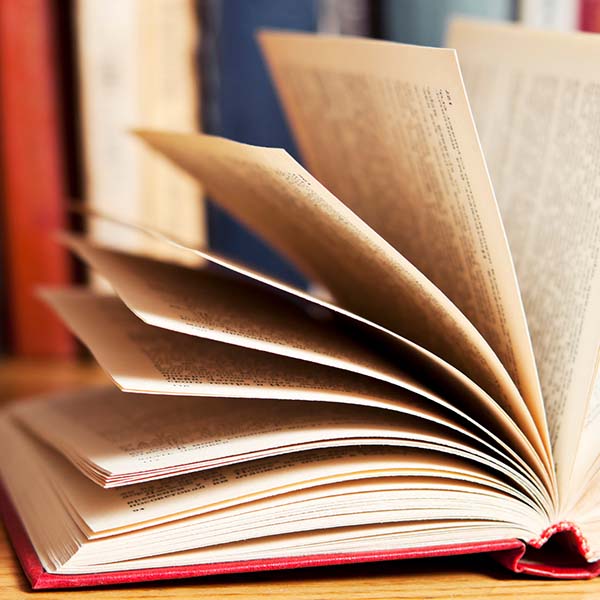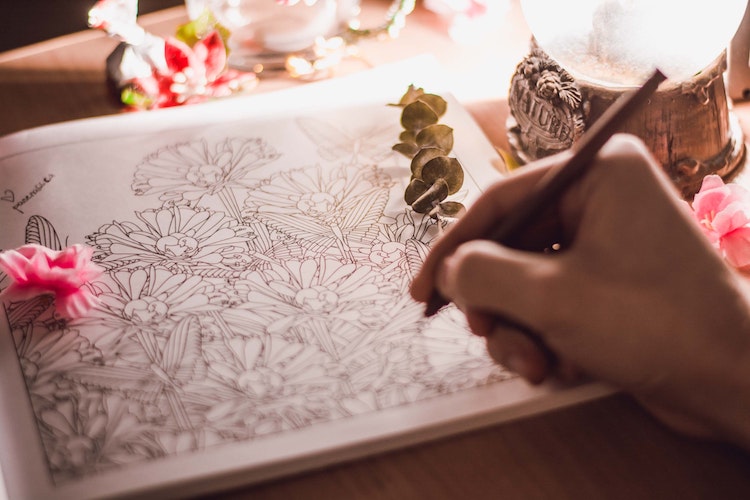
Photo: Mint Owl
This post may contain affiliate links. If you make a purchase, My Modern Met may earn an affiliate commission. Please read our disclosure for more info.
There are many ways to admire beautiful flowers that go beyond simply setting them in a vase. One way is to celebrate them through works of art. Flowers have a long place in art history, and various blossoms, as well as other botanical elements, have been a popular subject since Ancient Egypt. Since then, they’ve been found in many of the most significant art movements. You too can carry on this long tradition by learning how to draw a flower (or more).
There are so many types of flowers in the world that it’s an impossible feat to learn how to draw each one. But what you can do is understand the basic structure of a flower and the general sketching techniques to express all of its idiosyncrasies.
Whether you're trying to craft realistic flower art or stylized blooms, it’s important to note what’s beyond the petals. Just like drawing a cat, knowing the inner structure of a flower can inform the choices you make once you put pencil to paper.
General Structure of a Flower
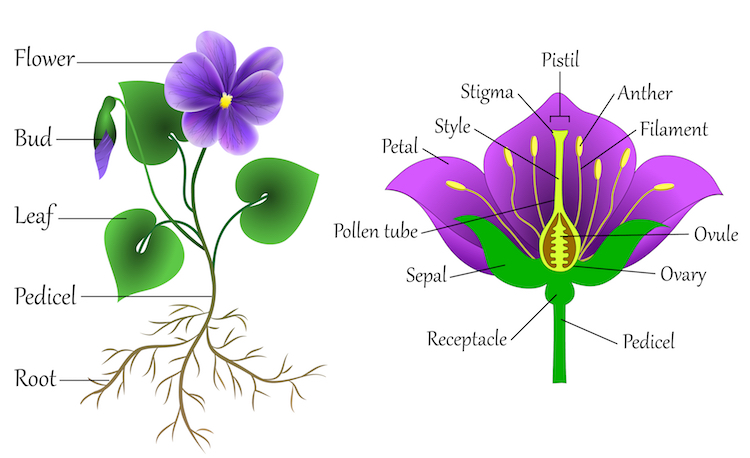
Diagram: Flower structure from Ellen Bronstayn / Shutterstock.com
This diagram demonstrates the inner parts of a flower. Some sections, like the style, aren’t always visible and are obscured by petals. But by knowing it’s there, along with the other reproductive parts, you’ll understand that there needs to be room for the flower to hold all of it—before it tapers to the sepal and then pedicel.
You don’t need to memorize where these parts are or what they’re called. You just need to understand the general structure in order to make informed decisions about what you’ll draw.
How to Draw Any Flower
There are hundreds of thousands of types of flowers in the world, but you can start drawing each in a similar way. Whether you’re sketching a rose or a daisy, the process is the same—so once you master it, you can draw all the bouquets you’d like.
If you’re just learning to draw flowers, we recommend working in pencil because it’s a forgiving tool. Here are some of the best drawing pencils both enthusiasts and professionals love.
Here are three different flowers that each use the same drawing technique.
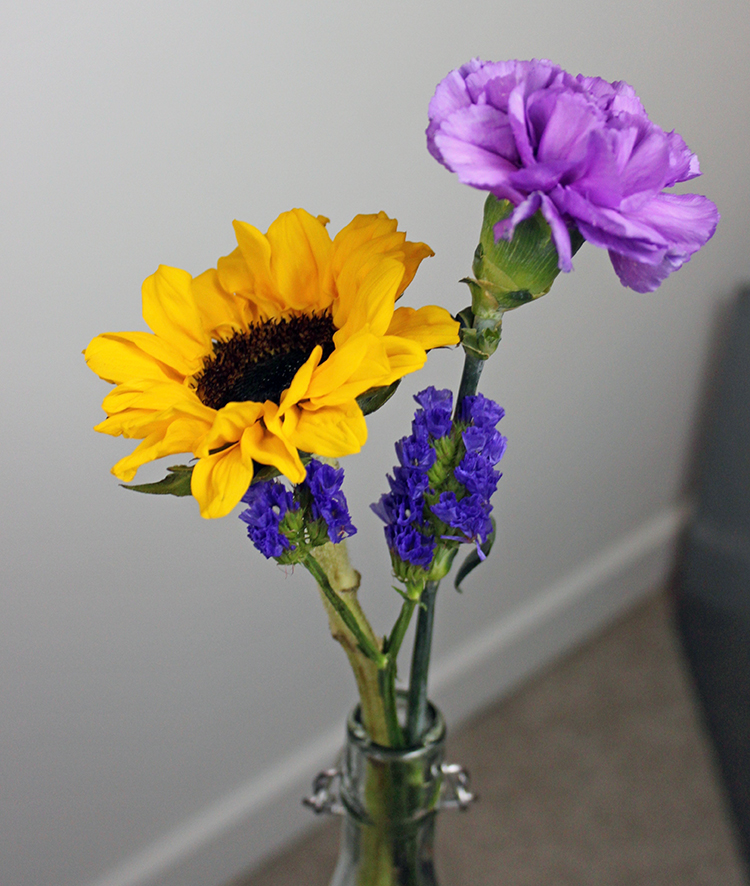
Photo: Sara Barnes / My Modern Met
Step 1: Break the parts of the flower into simple shapes.
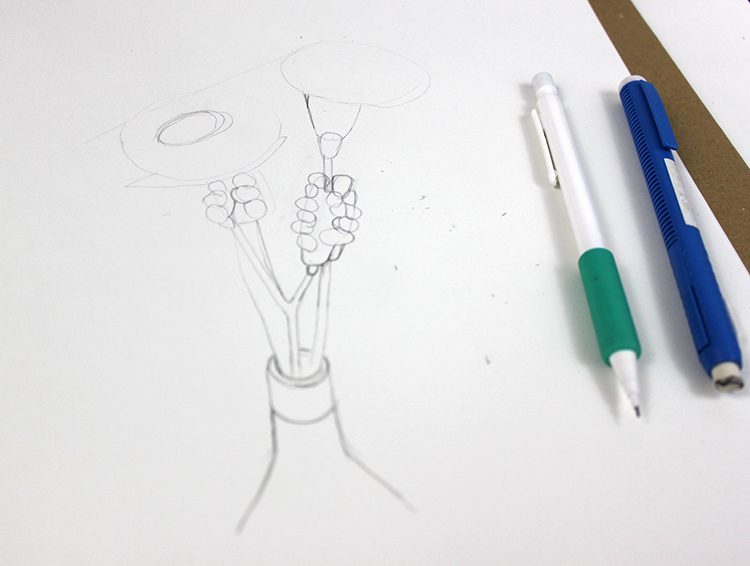
Photo & artwork: Sara Barnes / My Modern Met
Study your flower (or bouquet) for a moment to determine its overall shape. The carnation (light purple flower) is in the shape of an oval, while the smaller, darker purple blooms beneath it are a series of clustered circles.
Step 2: Refine the large shape into the smaller characteristics (like the petals).
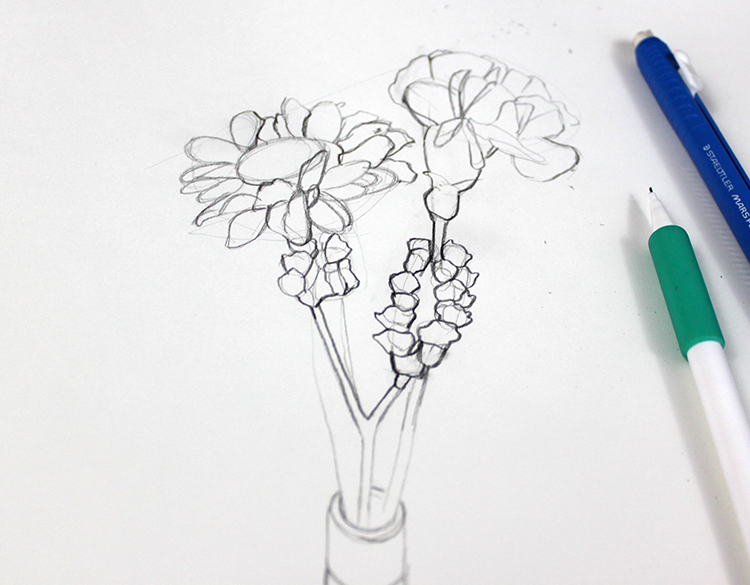
Photo & artwork: Sara Barnes / My Modern Met
Once you’re feeling confident that you’ve got the overall shapes down, start to refine your sketch. Block out the center of the flower. Observe—are the filaments showing? The stamen? If so, what kind of shapes do they make? Additionally, study the scale. How big is a petal compared to the center of the flower? How big is it compared to the overall size? Record those characteristics, along with the petals, on your paper.
This is the most important stage of your drawing because it’s easy to correct mistakes. So, be prepared to spend extra time getting things right. You don’t want to have to erase all your hard work later just for one small error!
Step 3: Distill the shapes even more.
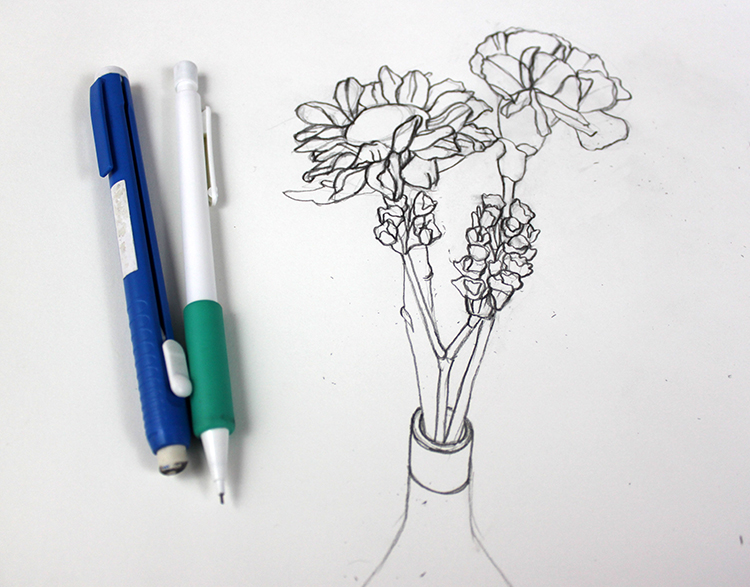
Photo & artwork: Sara Barnes / My Modern Met
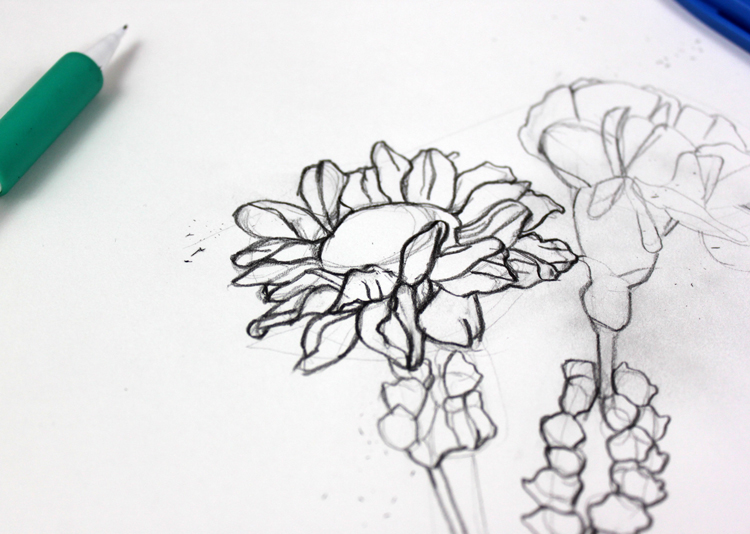
Photo & artwork: Sara Barnes / My Modern Met
Now that the drawing is getting more detailed, continue to refine your sketch even more. Carefully look at every petal shape and observe if it has creases or overlaps with other petals. If so, record the new form. Don’t fret about erasing; this is your last chance to alter your line drawing before you start adding shading.
Step 4: Apply shading and intricate details to complete the drawing.
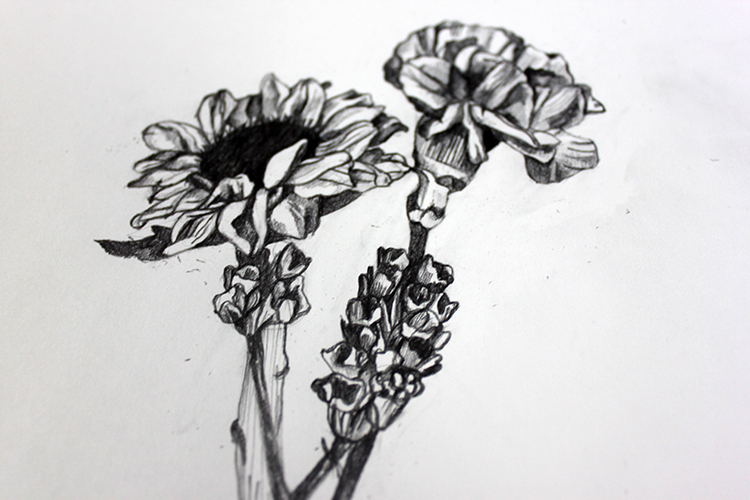
Photo & artwork: Sara Barnes / My Modern Met
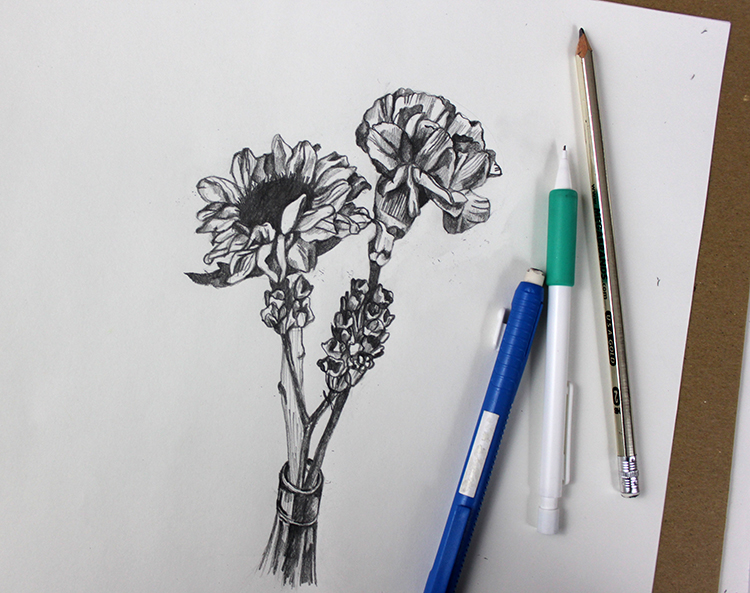
Photo & artwork: Sara Barnes / My Modern Met
Bring your drawing to life by applying a range of tones to your artwork. The back and forth shading technique is popular, but also consider hatching and cross-hatching in order to imitate some of the veins and textures you find on real flowers.
More Flower Drawing Instruction
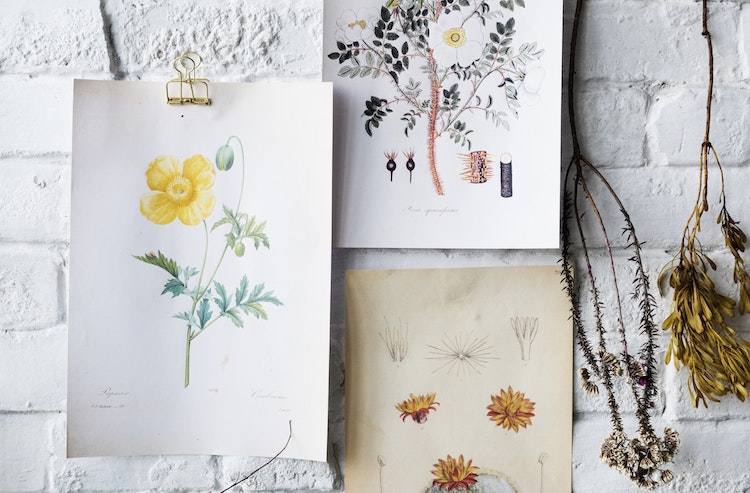
Photo: Rawpixel
If you’re itching for more flower-drawing techniques, these online classes are focused on how to sketch a variety of beautiful blooms.
- Basic Line Drawing: Flowers, CreativeBug: Looking for flowers drawn in a stylized way? Lisa Congdon will show you her technique.
- Vivid Flowers in Colored Pencil, Craftsy: This class demonstrates how to achieve lifelike blooms using colored pencils.
Alphonso Dunn also has a popular series of YouTube videos on how to draw and paint various flowers.
Flower Art Inspiration
Before you embark on your drawing journey, get inspired by other artists who draw and paint flowers.
Somang Lee

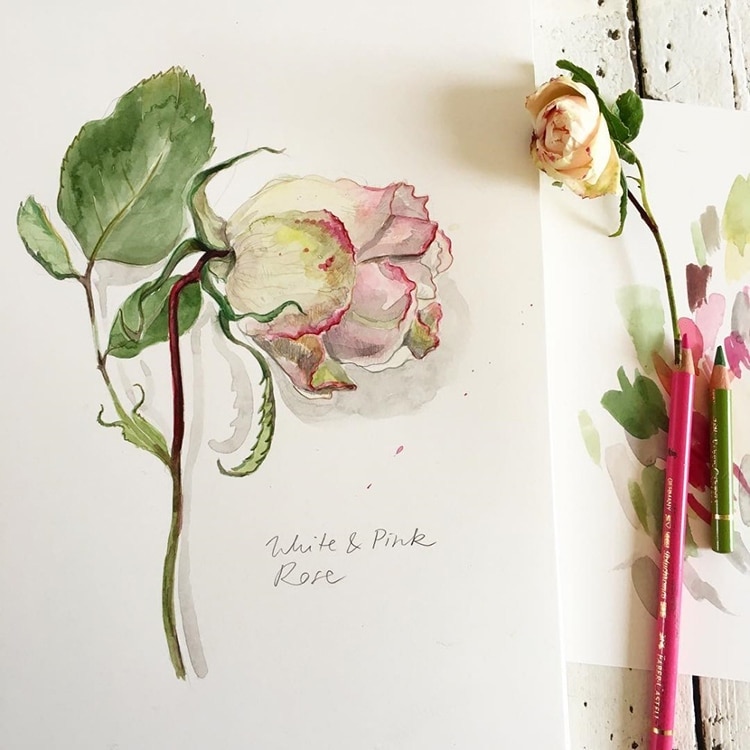
Xavier Casalta
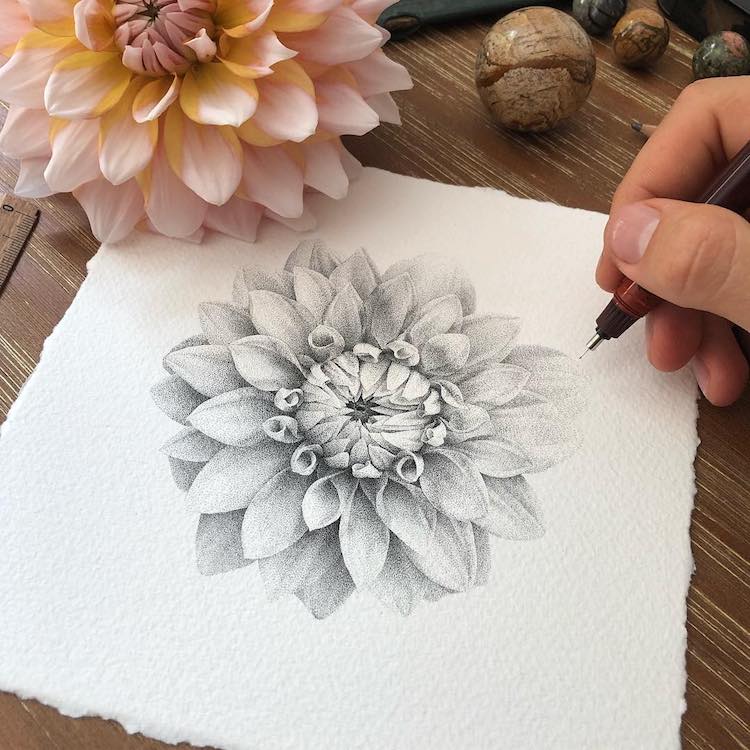
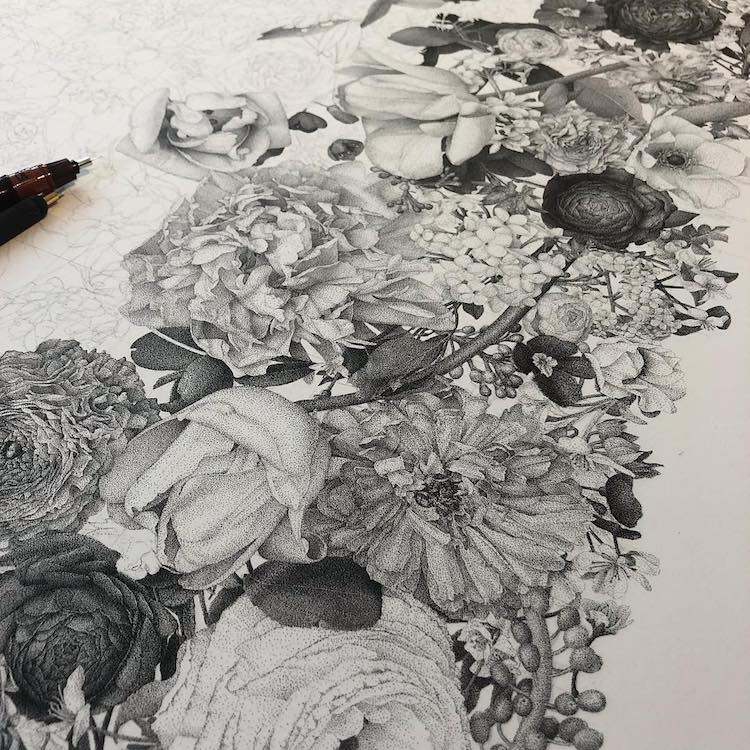
Christa van Houwelingen
Nan Rae
Helen Cousins
Eleanor Mills
Do you have a drawing to share? Post it in our Art, Design, Photography, and Drawing Club on Facebook!
Related Articles:
15+ Sketchbook Spreads That Will Inspire You to Get Drawing
New to Drawing? Make Sure You Know These Basic Techniques Before You Start
100+ Drawing Ideas That Will Get You Sketching Right Now
Best Drawing Pencils for Professionals and Beginners Who Love to Sketch











































































